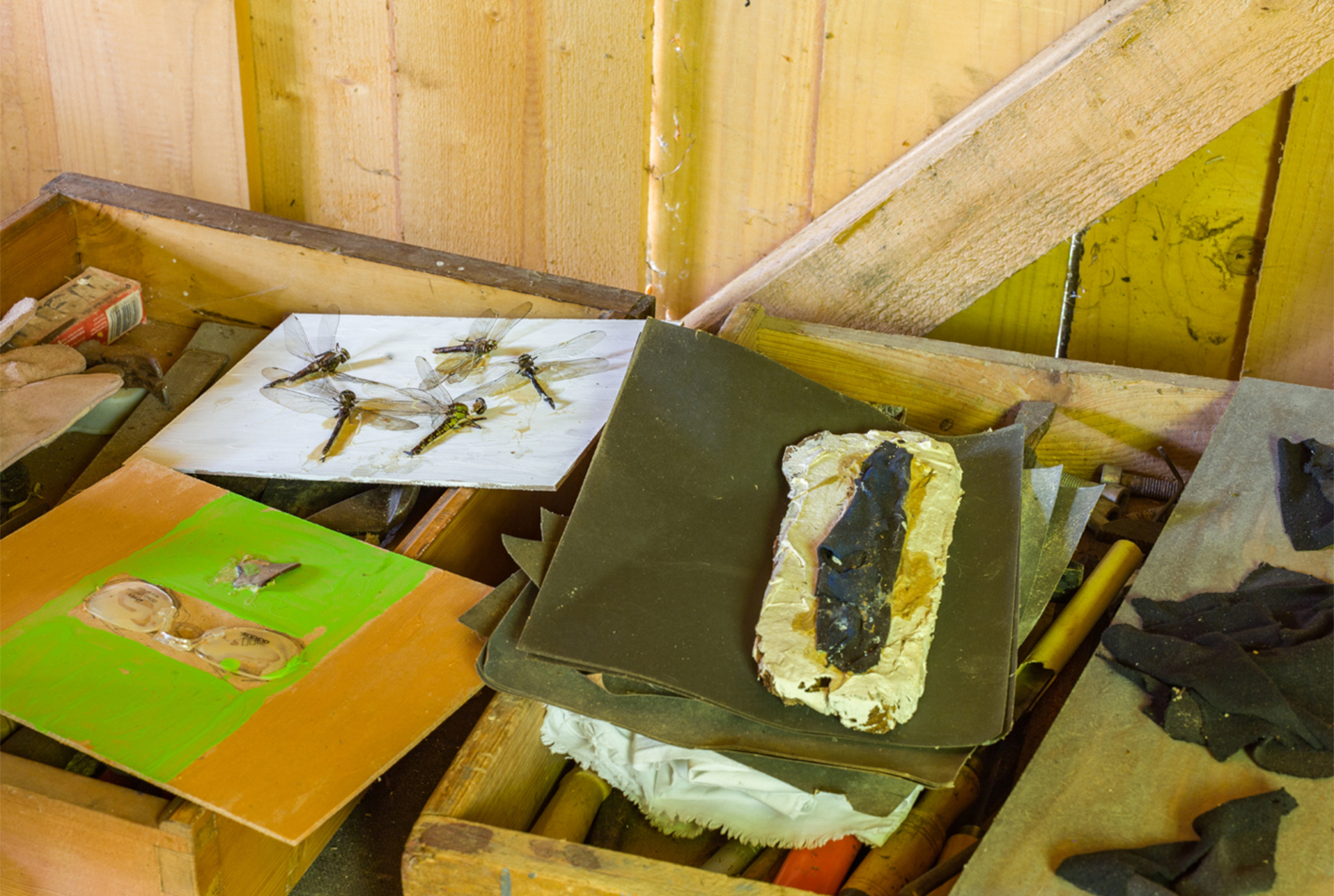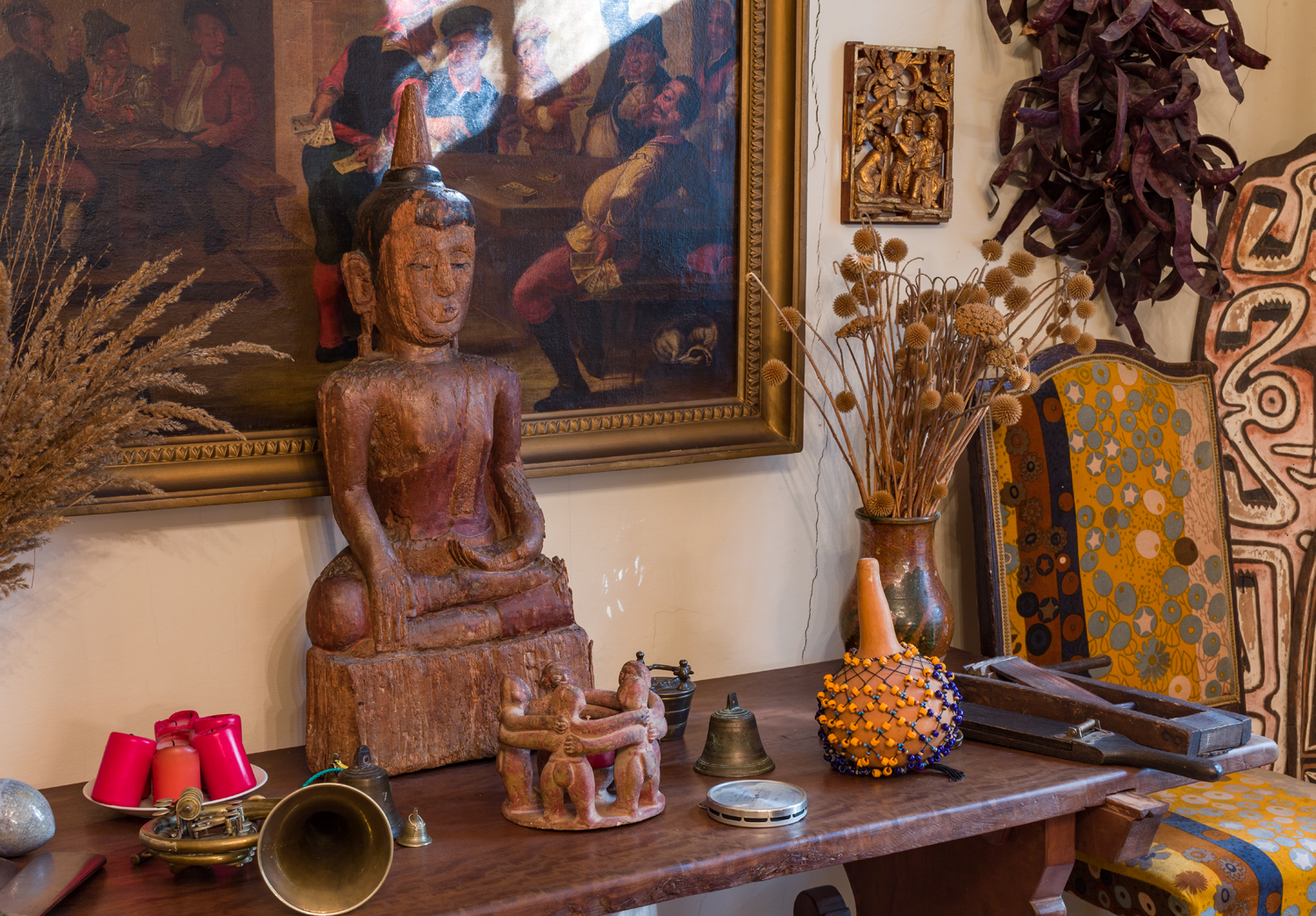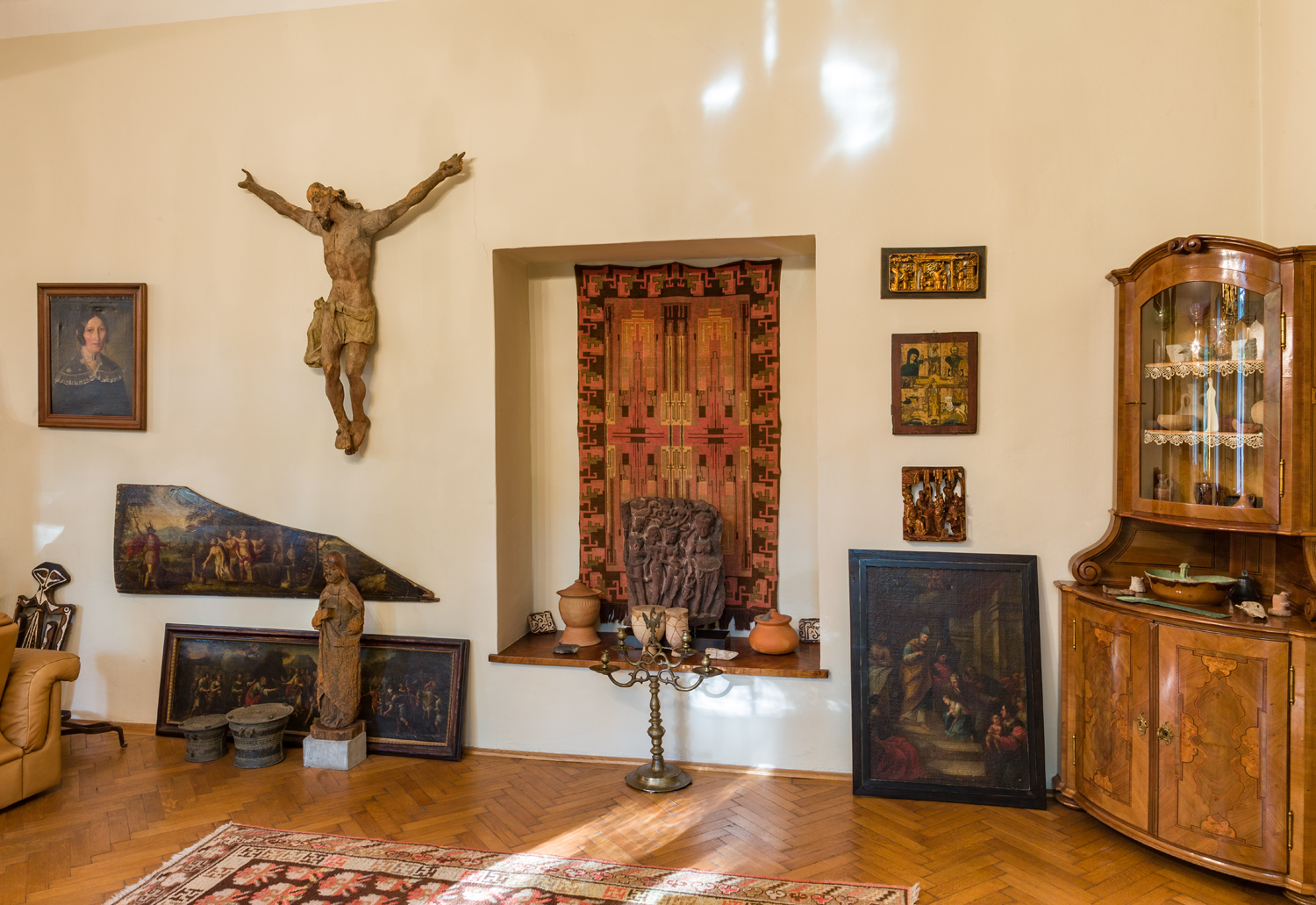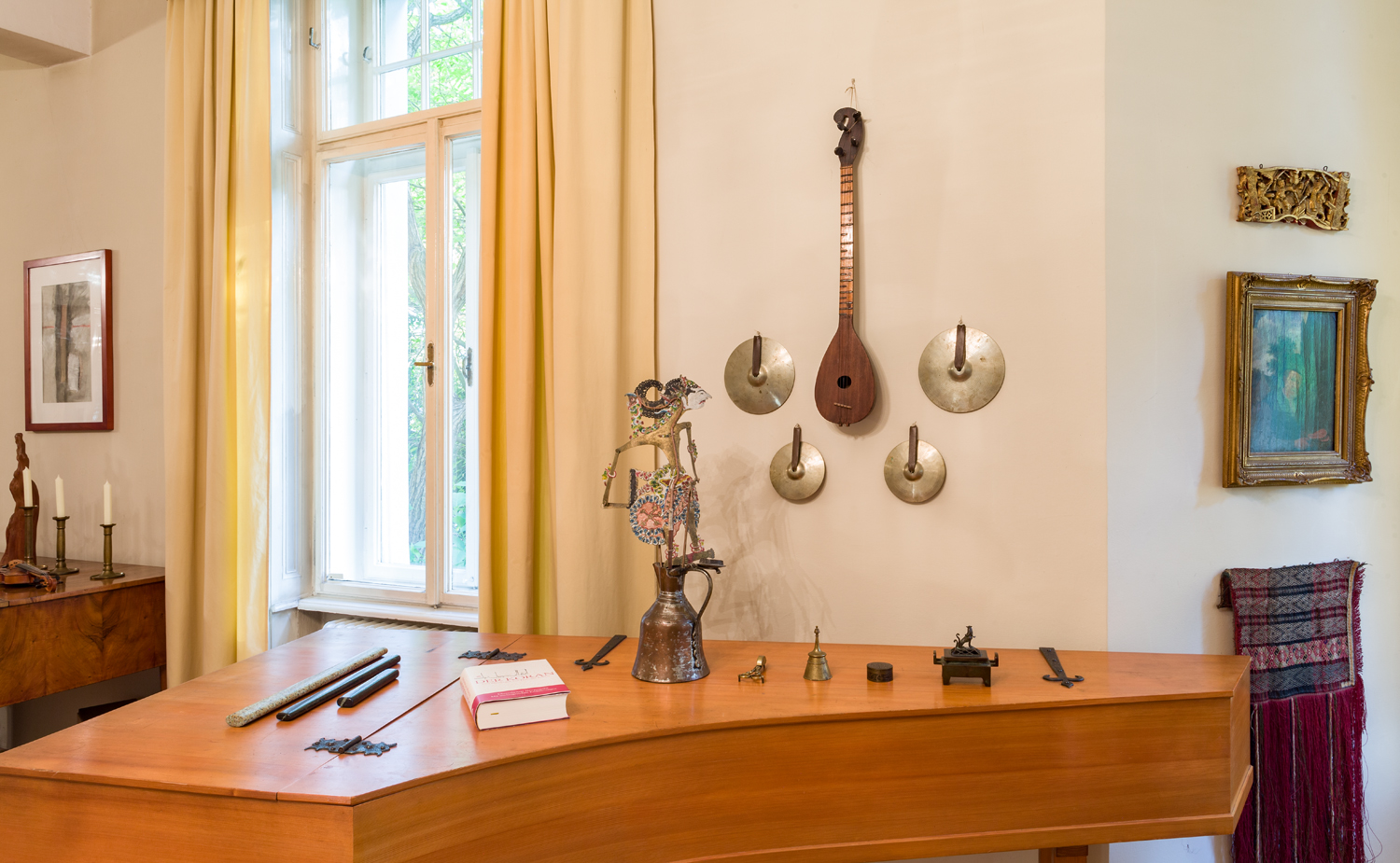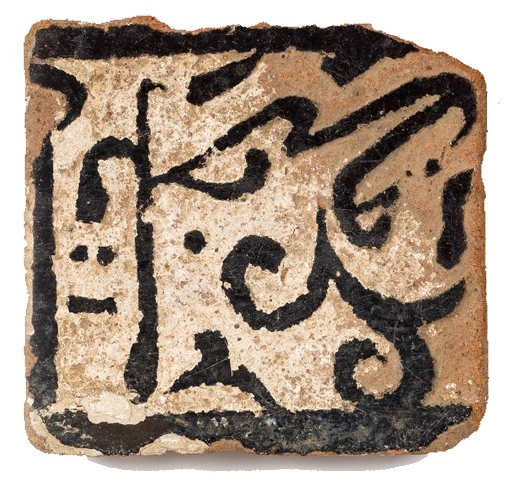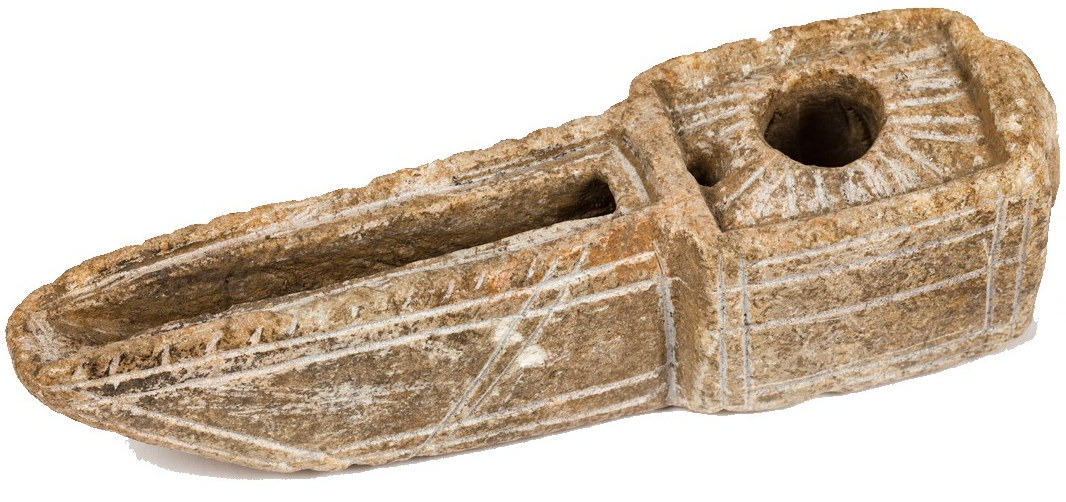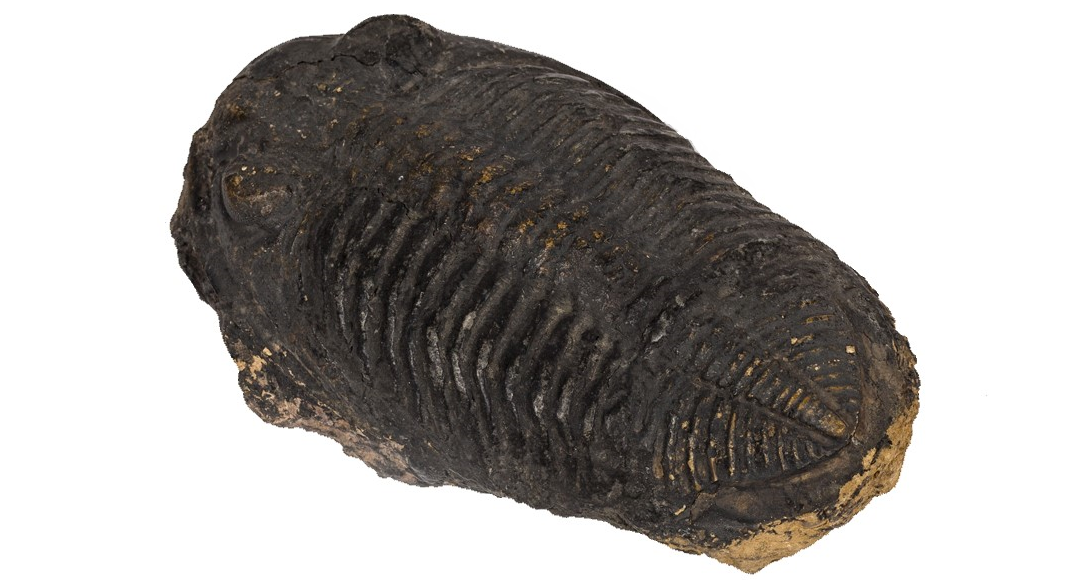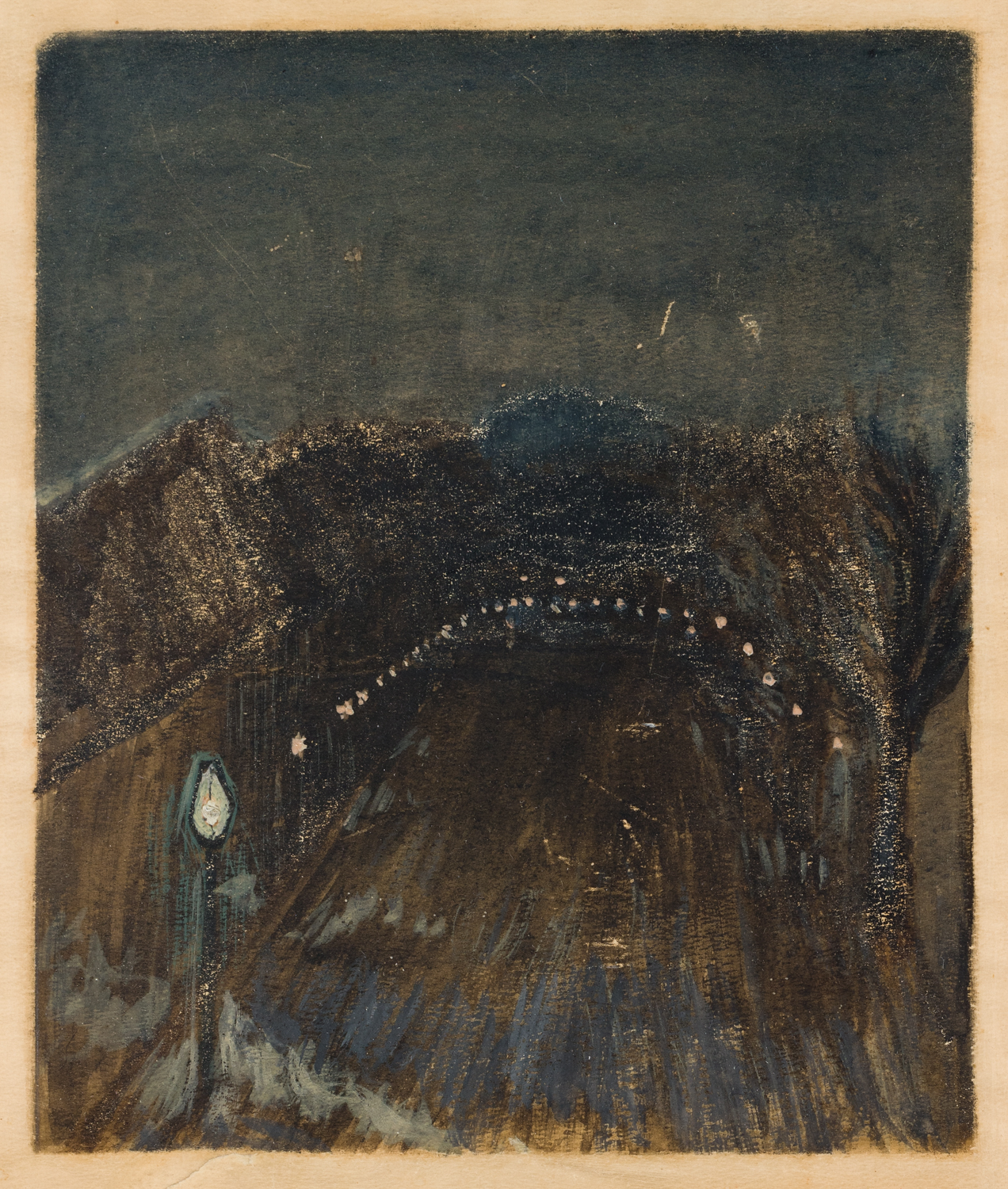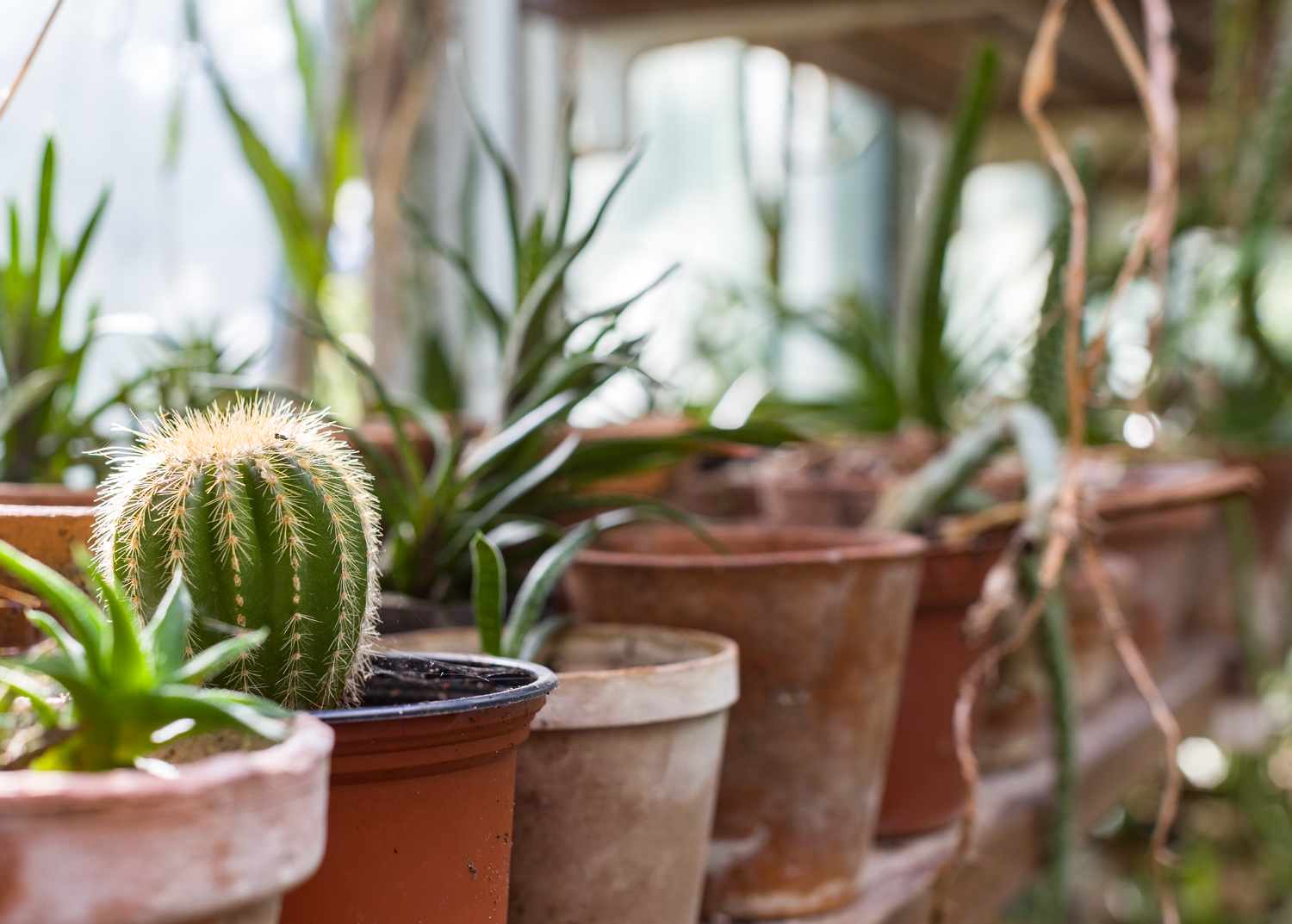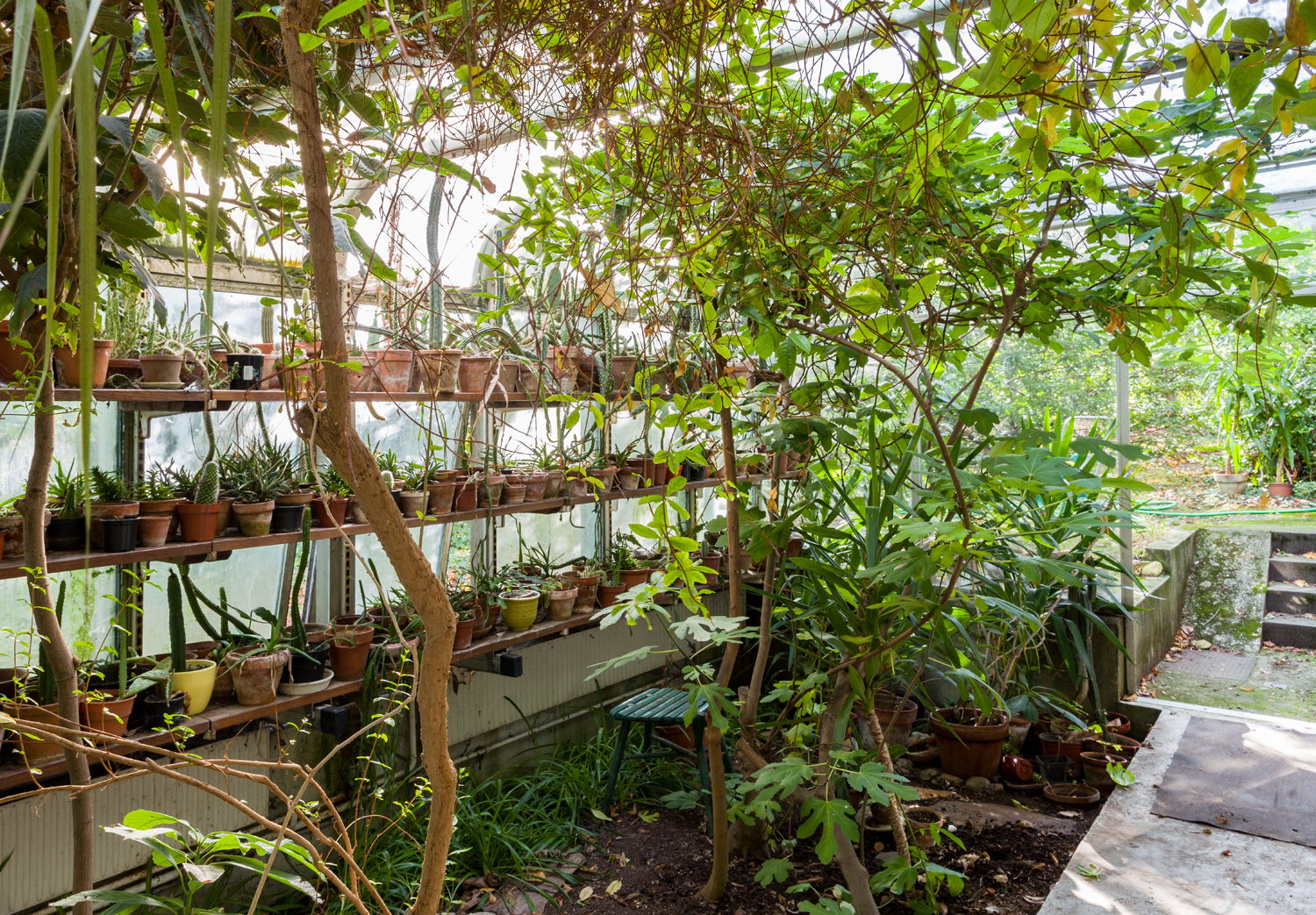The Collector
Cerha in his garden.
Moving freely in nature: This is one of Friedrich Cerha’s most basic needs. For Cerha, an artist at heart, stopping and closely observing his surroundings has always been an important part of directly and sensually becoming one with the world.
Photo: Hertha Hurnaus
In prehistoric times, collecting was essential to human survival; people of the Stone Age could not have existed without the gathering of berries, mushrooms, herbs, nuts, and other foods. In our industrialised world, labouring to gather food is no longer necessary. But collecting as an activity per se has not only remained, for many it has become an obsession. People collect things of monetary value such as art, postage stamps, and banknotes as well as items with only symbolic value. Some collecting passions are quite specialised indeed, ranging from stuffed animals to empty toothpaste tubes.
Society’s view of collecting has also changed over time. During the Baroque, it was considered “vain” to accumulate material things, even if in practice this was usually not the case. In the nineteenth century, an era of historicism, collectors amassed collections that were considered part of our cultural heritage. Johann Wolfgang von Goethe, a passionate collector of rocks and art, saw in collecting the potential to “model the world according to [one’s own] ideas” instead of “subordinating one’s ideas to material things”Johann Wolfgang von Goethe, Der Sammler und die Seinigen, sixth letter, Amsterdam 1997, p. 74. Friedrich Cerha also subscribes to this creative understanding of collecting. However, his focus has less of a scientific bent (unlike Goethe, whose research into the natural world included an interest in minerals). For Cerha, it is the aesthetic properties of the material that are key; collecting is, for him, an artistic practice. Cerha kept (and still retains) things that he later integrated into his (sculptural) paintings. It is not uncommon for these items to be objects of seemingly little value, although for Cerha they have great worth.
A Mindful Artist’s Soul
During an interview at the Donaueschinger Musiktage 2014, Cerha noted: “Today, people have often lost ‘mindfulness’ (what an old-fashioned word!) for what is around them. They use a great many things without really paying attention to them. And when they are no longer needed, they are ‘mindlessly’ cast aside.”“Achtsam auf die kleinen Dinge”, https://de.karstenwitt.com/artikel/achtsam-auf-die-kleinen-dinge-friedrich-cerha-als-bildender-k%C3%BCnstler How time flies! No longer is the word “mindfulness” considered old-fashioned, and in fact quite the contrary: Global trends such as the climate change movement have turned it into a buzzword that encompasses adopting alternatives to our consumer-oriented lifestyles. At second glance, the term’s political potential is revealed in current discourse regarding such topics as sustainability, awareness, the struggle against the all-threatening (and media-fuelled) culture of distraction. Cerha brings yet another component into play: an appreciation of overlooked objects. “Even as a child, I had a special relationship with the little things that are all around us,” says the artist, “and I collected the ones that I found particularly beautiful and attractive: stones, roots, old wood, metal parts, seeds, tree bark, coins … and I lived together with them.” “Debütant mit 90 Jahren… Dieter Ronte im Gespräch mit Friedrich Cerha”, in: Gundula Wilscher (ed.): Vernetztes Werk(en). Facetten des künstlerischen Schaffens von Friedrich Cerha, Innsbruck et. al. 2018, pp. 161–165, here p. 161 Over the years, collecting became not only a hobby, but a crucial foundation of Cerha’s artistic approach. His perception of the world intensified, and subtle nuances developed. “I have cultivated this mindfulness throughout my life, and I still enjoy observing the fringes of what is around me and what others may throw away,” he says. “My wife once cattily remarked that I’m more interested in things than in people.”“Debütant mit 90 Jahren… Dieter Ronte im Gespräch mit Friedrich Cerha”, in: Gundula Wilscher (ed.): Vernetztes Werk(en). Facetten des künstlerischen Schaffens von Friedrich Cerha, Innsbruck et. al. 2018, pp. 161–165, here p. 162
Cerha’s loving relationship to objects first manifested in his creative oeuvre. Object paintings have dominated his work since 1963, containing everything that falls into his hands: everyday items such as nails, screws, spark plugs, sawblades, razor blades, gloves, keys, and scraps of cloth, as well as natural materials like pieces of wood, bark, stones large and small, grass, and clumps of earth. A cross-section of all the things united in Cerha’s collections shows the world as it is.
Collected items in Cerha’s workshop in Maria Langegg
Photos: Christoph Fuchs
Taking the World In
Cerha’s thoughts and feelings have always been characterised by an irrepressible curiosity. This drove him along his path, dropping the things of this world into his collector’s bag. A peek into his home reveals true treasures: It is teeming with large and small objects that he has brought together over the decades, motivated by a wide variety of reasons.
Cerha, Vienna apartment, various views
Photo: Christoph Fuchs
Each of these unique pieces tells a tale of his love for alluring, often small objects that invite one to touch them. Cerha was also interested in the cultures of countries that he did not visit himself. He was fascinated by the oceanic islands northeast of Australia—a space as far away as possible from his own orbit, both geographically and culturally. He found the Iatmul, an indigenous people of Papua New Guinea, particularly fascinating. They were—or still are—the epitome of “foreign” from the European point of view. Ancient traditions and mythical rituals remain an important part of their way of life today. In the late 1980s, as Cerha was reflecting on his own musical culture through his Zweites Streichquartett, he purchased a richly decorated New Guinean skull trophy hook.Schriften: ein Netzwerk, Vienna 2001, p. 261 He did not stop with collecting this single item. There are several such artefacts in Cerha’s collection—flat wooden discs with ornate paintings, sculptural objects, and reliefs.
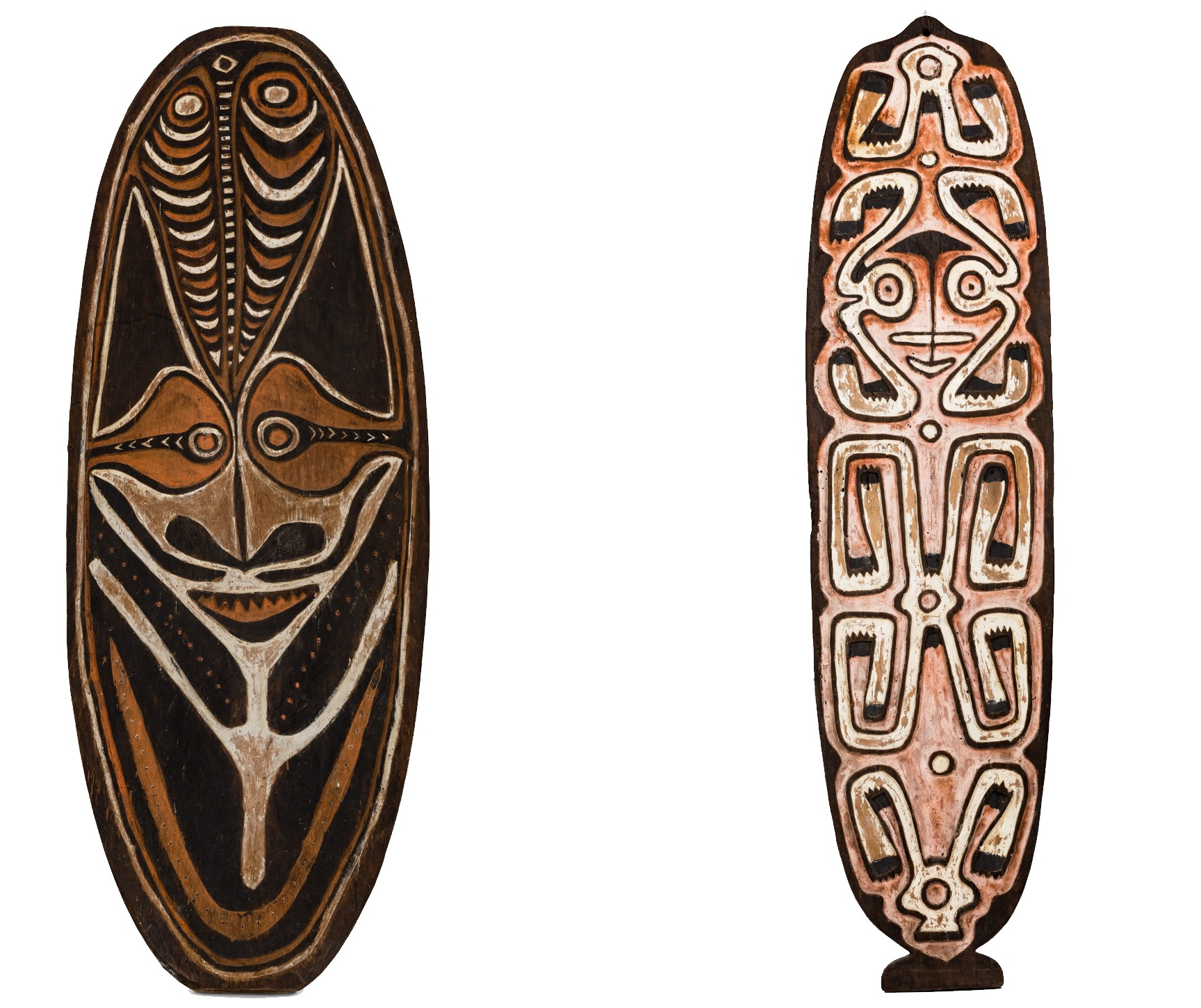
Skull trophy hook from Oceania, kept in Vienna

Ethnic art, in Maria Langegg
Photo: Christoph Fuchs

Christian artwork, in Vienna
Photo: Christoph Fuchs
When strolling through Cerha’s various living spaces, one comes across art in all shapes, colours, and sizes. And on occasion, Cerha the composer has been known to ally himself with Cerha the collector. An apt example of this is a painting by Arnold Schönberg, bequeathed by Josef Polnauer, which is significantly titled Nachtstück. The piece, created in 1911, is an indication of Cerha’s appreciation of the Viennese School on the one hand, and of his admiration for expressive painting on the other. The subject likely cast a spell over him as well: Cerha is not only an avowed “night worker”, but was and still is very excited by the phenomena of night-time. Once again, the collected object and a sensual, creativity-stimulating experience merged with one another.
A Natural Collecting Passion
After all, one finds traces of Cerha’s interest in mushrooms and mycelium in his compositions. He also expressed enthusiasm about the “green plant world”. His special love for one particular genus, the euphorbia, must be highlighted. In the 1960s he began to discover the highly different-looking species that grows scattered across the globe. The experiences that resulted from this discovery also shaped his music, for example in his ensemble work Exercises. In keeping with his blossoming botanical interest, he ultimately began to not only study plants, but also to collect them. The large garden at his Lower Austrian home testifies to this close connection between his collecting and creating. “In the fantastic wilderness of Maria Langegg, he was able to be particularly close to the secret life of plants and animals.”Monika Mertl, “Träumen, atmen, tun”, https://www.musikverein.at/magazin/2021/februar/traeumen-atmen-tun His Vienna property provides a counterpart: There is a large greenhouse next to the house, filled with the euphorbias (often very cactus-like) and many other species that inspired his compositions. For decades, Cerha brought offshoots of various plants of different origins to Vienna, transplanting and breeding them. An impressive array of diverse greenery emerged. Here, Cerha’s explorations of the world and his careful collecting intersect in a deeply moving way.
Cerha’s greenhouse, Vienna Hietzing, impressions
Photo: Christoph Fuchs


